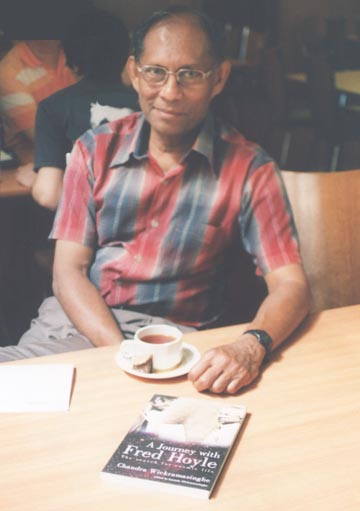August 19, 2006 Cardiff, Wales - Nearly half a century ago in 1960, a mathematics graduate student from Colombo, Sri Lanka, set off on his first international trip to Cambridge, England. His name is Chandra Wickramasinghe. He was fascinated by stars in the night skies, wondered about other life Out There, and his Cambridge University advanced degree was in Astronomy. His faculty supervisor was the famous Cambridge astronomer, Fred Hoyle. The two men had the curiosity and courage to look for other life in the universe by studying cosmic dust. Their controversial panspermia hypothesis was that the universe is teeming with at least microbial life, which can be transported from one cosmic location to another. In their collaboration, the two astronomers felt strongly that the double helix DNA found in all Earth life had been seeded here by comets or other cosmic bodies and that same DNA would be found in all life forms throughout the cosmos.

Click here to subscribe and get instant access to read this report.
Click here to check your existing subscription status.
Existing members, login below:
© 1998 - 2024 by Linda Moulton Howe.
All Rights Reserved.

